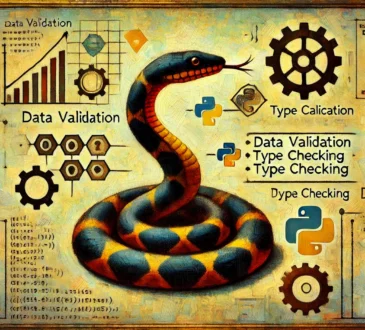
What is a Web Development Framework?
Before diving into the world of Flask and FastAPI, it’s essential to understand the concept of a web development framework. In this blog post, we’ll explore the basics of a web development framework and then move on to discussing the pros and cons of using Flask and FastAPI.
What is a Web Development Framework?
A web development framework is a collection of modules, libraries, classes, and functions that helps web app developers write applications without worrying about low-level details like protocol and thread management. It provides the necessary components for development, including routing, request handling, and more. This allows developers to focus on the logic of their application rather than worrying about the underlying infrastructure.
What is Flask?
Flask is a lightweight Python-based web application framework. It’s often referred to as a micro web framework, meaning it doesn’t require specific tools or libraries. It’s designed to keep the core simple yet extensible. This makes it an excellent choice for beginners. With Flask, you can build simple and complex applications, including websites, e-commerce stores, and more. Some of the popular companies that use Flask include Netflix, Reddit, and Mozilla.
What is FastAPI?
FastAPI is a modern and high-performance web framework that’s designed to build APIs with Python 3.6+. As its name suggests, FastAPI is indeed fast and offers high performance, which is comparable to NodeJS and Go. Due to its simplicity and flexibility, it’s used by top companies like Uber and Netflix to build their applications.
FastAPI vs Flask: What’s the Difference?
Now that we’ve covered the basics of Flask and FastAPI, let’s take a closer look at their differences. In this section, we’ll discuss the pros and cons of using each framework.
HTTP Methods
One of the primary differences between Flask and FastAPI is in how they handle HTTP methods. While Flask doesn’t provide data validation, FastAPI does. This means that FastAPI can ensure the integrity of your data, which is a significant advantage.
Passing Parameters and Error Messages
Another important difference is the way error messages are displayed. Flask uses HTML pages to display error messages by default, while FastAPI displays error messages in JSON format. This is a significant advantage of using FastAPI.
Asynchronous Tasks
FastAPI supports asynchronous tasks, which is a significant advantage. This allows developers to write concurrent code and improve the performance of their application.
Documentation Support
In terms of documentation, FastAPI generates documentation on the go, which is a significant advantage. You can test your API endpoints directly from the generated documentation. This feature makes it easier to develop and debug your API. Flask, on the other hand, requires manual documentation.
When to Use Flask vs FastAPI
Based on the pros and cons of each framework, we can conclude that FastAPI is a better choice for building APIs, machine learning models, and scalable applications. However, Flask is still a popular choice for developing quick prototypes and small-scale websites and applications.
Conclusion
In this post, we’ve discussed the basics of web development frameworks, what Flask and FastAPI are, and their differences. We’ve also highlighted the pros and cons of using each framework. Ultimately, the choice between Flask and FastAPI depends on your use case.



